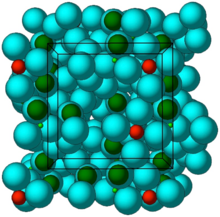Shionogi announced that the New Drug Application (NDA) submitted in the U.S. for naldemedine, a once-daily, oral 0.2 mg tablet, has been accepted for review. In the U.S., the proposed indication is for the treatment of opioid-induced constipation (OIC) in adult patients with chronic non-cancer pain (CNCP). The target action date under the Prescription Drug User Fee Act (PDUFA) is March 23, 2017. The company also submitted an NDA in Japan on March 30, 2016 for the proposed indication of the treatment of OIC in adult patients.
Naldemedine is an investigational peripherally-acting mu-opioid receptor antagonist (PAMORA) being studied in the US for the treatment of OIC in adult patients with CNCP. Opioid-induced constipation is characterized by any of the following: reduced bowel movement frequency, development or worsening of straining to pass bowel movements, a sense of incomplete rectal evacuation, or harder stool consistency after initiating opioid therapy.

"If approved, naldemedine will offer a new therapeutic option for chronic non-cancer pain patients living with opioid-induced constipation, a common and often debilitating condition," said Dr. John Keller, President and CEO, Shionogi Inc. "Shionogi is committed to developing new treatments to improve the lives of patients around the world. We look forward to working with U.S. and Japanese health authorities to bring naldemedine to market for their respective indications."
The NDA submissions include data supporting the efficacy and safety of naldemedine from the Phase III COMPOSE program.
About COMPOSE
The COMPOSE program is a global comprehensive development program comprised of seven clinical studies being conducted in patients with OIC and cancer or chronic non-cancer pain.
COMPOSE I and II were 12-week, multicenter, randomized, double-blind, placebo-controlled, parallel-group studies. Both studies were designed to evaluate the efficacy and safety of naldemedine therapy versus placebo in patients on opioid therapy for at least three months and on a stable dose of opioids for at least four weeks, and who experience chronic non-cancer pain accompanied by OIC. The sample population for COMPOSE I and II included 547 and 553 patients, respectively.
Shionogi previously announced that naldemedine met its primary and key secondary endpoints in COMPOSE I, II and IV. COMPOSE IV was conducted in Japan.
In the studies, a bowel movement occurring within 24 hours after rescue laxative therapy was not considered a spontaneous bowel movement (SBM).
About Opioid-Induced Constipation (OIC)
Opioid-induced constipation (OIC) is characterized by any of the following after initiating opioid therapy: reduced bowel movement frequency, development or worsening of straining to pass bowel movements, a sense of incomplete rectal evacuation, or harder stool consistency.1 Approximately half of all chronic non-cancer pain patients who have OIC are dissatisfied with laxatives.2 Managing OIC and its clinical consequences places a significant burden on the healthcare system and the patient.









 Valsartan
Valsartan